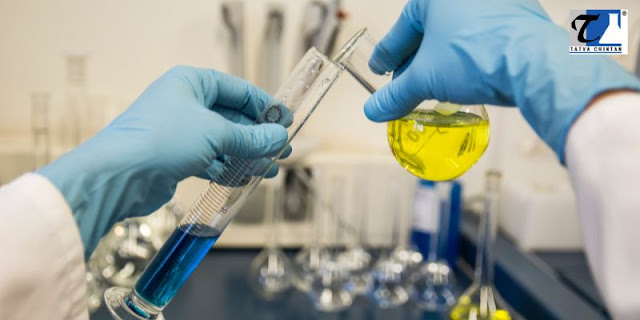A Key Compound in Modern Chemical Research (Ethyl Triphenyl Phosphonium Iodide)
Ethyl Triphenyl Phosphonium Iodide as a Key Compound in Modern Chemical Research.
Ethyl Triphenyl Phosphonium Iodide Use in PTC In Organic Synthesis
ETI is commonly used in organic synthesis as a PTC. PTCs are compounds that help to transfer reactants between immiscible phases. This is usually to form an organic phase from an aqueous phase by forming complexes with the reactants.
Also, the structure of ETI makes it an excellent PTC. This allows it to efficiently catalyze reactions that, in other cases, would be impossible or difficult to perform. In PTC-mediated reactions, one of ETI's major applications is synthesizing various organic derivatives such as nitriles, esters, and alkyl halides.
Furthermore, ETI enables these reactions by providing a hydrophobic environment that improves the solubility of the reactants in the organic phase. There is also the ethyl group attached to the Phosphonium cation. This helps in providing an additional site for the reaction, improving the efficiency of the reaction.
ETI's compatibility with different reaction conditions like harsh chemical environments, pressures, and high temperatures is also important as a PTC. For this reason, it is a valuable tool for organic chemists working on challenging synthetic issues and modern chemical research.
Ethyl Triphenyl Phosphonium Iodide Use as A Precursor for Synthesis
In addition to its use as a PTC in organic synthesis, ETI is also a valuable precursor for synthesizing other Phosphonium salts and Phosphine derivatives. It can undergo various reactions to produce useful compounds with different applications and properties.
A common approach for generating other phosphonium salts using ETI involves halogen exchange reactions. Here, other Halides, such as Bromide or Chloride, replace the iodide group. These reactions can be performed under mild conditions and produce various compounds with different electronic and steric properties.
Additionally, ETI can be used as a starting material for synthesizing Phosphine derivatives, including Phosphine Boranes, Phosphine Sulfides, and Phosphine Oxides. These compounds can be used in different applications and material science, catalysis, and organic synthesis.
For example, Phosphine Sulfides have been utilized as precursors for synthesizing semiconductor materials. Phosphine Oxides have also been used as ligands in transition metal-catalyzed reactions. The application of ETI makes it an important tool in modern chemical research.
Ethyl Triphenyl Phosphonium Iodide Application in Materials Science and Electrochemistry
ETI has unique properties as a cationic species. This has given it many applications in materials science and electrochemistry. ETI is also a suitable starting material for synthesizing various functional materials. This is because it is a soluble and highly stable salt.
Another major application of ETI is in materials science, which is used to prepare ionic liquids. Ionic liquids are salt with low melting points. These salts can be used for different types of chemical reactions as well.
ETI has also been used to prepare ionic liquids with specific properties. Some of the required properties include low toxicity and high thermal stability. For this reason, they are suitable for use in conversion applications and energy storage.
In electrochemistry, ETI has been used as a supporting electrolyte in electrochemical reactions. Its low viscosity and high ionic conductivity make it suitable for electrolytic cells. When used in electrolytic cells, it enhances the selectivity and efficiency of electrochemical reactions.
Furthermore, conducting polymers are another place ETIs are used as a dopant. Conducting polymers are materials that have a special electronic property. These properties allow it to be used in applications in electronic sensors.
Conclusion
Modern chemical research is an important aspect of the chemical manufacturing industry nowadays. Ethyl Triphenyl Phosphonium Iodide plays a huge role in the research process. For these reasons, ETI is a valuable compound in materials science and with potential application in electronic devices, energy storage and conversion, phase transfer catalysis, and electrocatalysis.






Comments
Post a Comment